You should now have a good understanding of what our planet looks like on the surface, but what does it look like on the inside? Note that, in this context, “look like” means knowing such things as what the inside is made of and what kind of form (such as solid or liquid) these materials take at different depths.
You might think it would be very difficult for us to learn about Earth’s interior, because we obviously can’t see inside our planet. Moreover, we can’t collect samples from most of our planet’s interior, because even our deepest drill holes have barely scratched the planet’s surface. In fact, the deepest that anyone has ever drilled into Earth’s interior is only about 12 kilometers, which to scale is the equivalent of going only 0.3 millimeters into a typical classroom globe — which is thinner than the paperboard (or other material) that the globe is made from. (Assuming a standard globe diameter of 30.5 centimeters or 12 inches.)
Nevertheless, we humans have managed to learn a lot about what Earth is like on the inside. We’ve done this in four major ways.
- We learn about Earth’s bulk characteristics, such as its mass and density.
- We study rocks, which under careful examination reveal clues about how they formed and how they have changed through time.
- We study seismic waves , which are produced by earthquakes and travel through Earth’s interior. Careful study of these waves (such as observing their speeds and paths) tell us about the material they pass through.
- We combine all our data with our understanding of the laws of physics and our general understanding of the solar system to draw more specific conclusions about what Earth looks like on the inside.
In the rest of this chapter and the next chapter, we will see in some detail how these studies have helped us learn about our planet. Here, we’ll focus first on getting a “big picture” view of what our planet must look like on the inside.
Earth’s Bulk Characteristics
Three of the most important bulk characteristics of our planet are its mass, size, and average density. If you think back to what you’ve already learned, you’ll realize that you already know how scientists have determined each of these characteristics.
Discuss the following questions with a classmate. Then click to open the answers to see if they agree with what you came up with.
- How do we measure Earth’s mass?
Recall that we can calculate the mass of any object in space — including Earth’s mass — by measuring the orbital period and orbital distance of an object orbiting it (see Section 3.4.4.). Scientists first calculated Earth’s mass simply by using the orbital period and distance of the Moon along with the universal law of gravitation. Today, we can do the same thing — with much higher precision — from the orbits of artificial satellites.
- How do we measure Earth’s size?
Recall that the ancient Greeks not only figured out that Earth is round, but even succeeded in measuring its circumference — from which we can calculate radius (because C = 2 x π x r) — by comparing noontime shadows in different locations (see the Do the Math box in Section 3.1.1). More recently, direct measurements (by travel) and satellite measurements give us very precise knowledge of Earth’s size, including how its radius varies with latitude (Earth is slightly larger around the equator than around the poles; recall the discussion of equatorial bulging in Section 3.4.3.). Once we know Earth’s radius, we can calculate Earth’s volume.
- How do we determine Earth’s average density?
Recall that density is defined as mass divided by volume. Because we know mass and volume as above, we need only simple division to calculate Earth’s average density.
One example of how these bulk characteristics help us understand our planet comes from the resulting density that these characteristics allow us to calculate for Earth. First, let’s briefly review how we state and interpret densities.
Density Units and Context
Density has units of mass divided by units of volume. Remember that in science we will stick with international metric units, but this definition still gives us choices. For example, we can state mass in grams or kilograms, and we can state volume in cubic centimeters, cubic meters, or liters. With that in mind, here are the two most common ways of stating densities:
- The official international metric units of density are kilograms per cubic meter, abbreviated as kg/m3.
- In Earth science, it is more common to state densities in units of grams per cubic centimeter, abbreviated as g/cm3.
In this book, we will stick with the common Earth science units, because they are easier to interpret. For example, the density of a typical chunk of granite rock (like the type used for many stone countertops; see Figure 4.14b below) is about 2.7 g/cm3. You can put this value into context as follows:
- To think about masses in grams: 1 gram is the weight of any U.S. bill (Figure 4.13). It is easiest to feel this small weight if you fold up the bill and hold in your hand. Other common items that weigh about 1 gram include small metal paperclips and individual sticks of gum. (Note: As you know, a gram is technically a unit of mass, but on Earth this unit is also used for weight, and it is easier to think about weight than mass when holding objects in your hand.)
- To think about volume in cubic centimeters: You can easily visualize (or make) a cubic centimeter with the aid of a ruler. It is simply a cube that is 1 centimeter long on each side. In terms of everyday objects, this is a bit smaller than a typical 6-sided die or a typical sugar cube.
- To compare densities, remember that the density of water is 1 g/cm3. Therefore, a granite rock with a density of 2.7 g/cm3 is 2.7 times as dense as water, which means that any particular volume of the granite rock would weigh 2.7 times as much as the same volume of water.
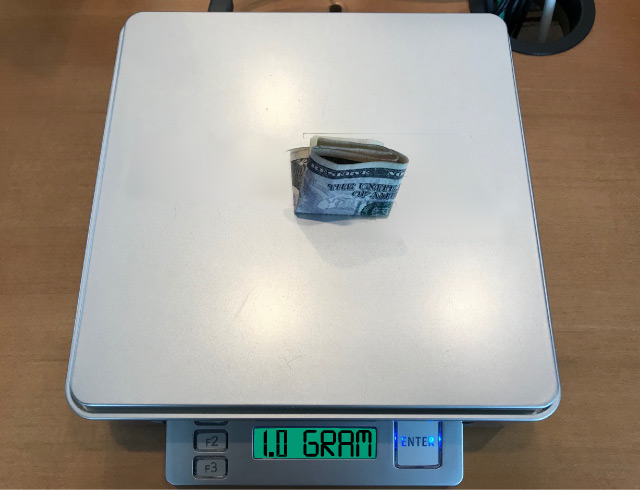
Quick Quiz 1
Note: As always, after you finish the quiz, be sure you read the feedback that explains the correct answers, to make sure you understand the reasons for these answers.
Comparing Earth’s Surface and Average Densities
Earth’s average density turns out to be about 5.5 grams per cubic centimeter (5.5 g/cm3); the Do the Math box below shows how we calculate this. In other words, Earth on average is about is 5½ times as dense as liquid water.
This average density provides important information about Earth’s interior, because nearly all rocks that we find on Earth’s surface are less dense than this. For example, granite is one of the most common forms of rock on Earth’s surface (Figure 4.14), and as we’ve already discussed, granite’s density is only about 2.7 g/cm3. In fact, careful studies of rock from all around Earth show that the typical density of surface rock is between about 2 to 3 g/cm3. Now think about the following questions to see how this fact helps us understand Earth’s interior.
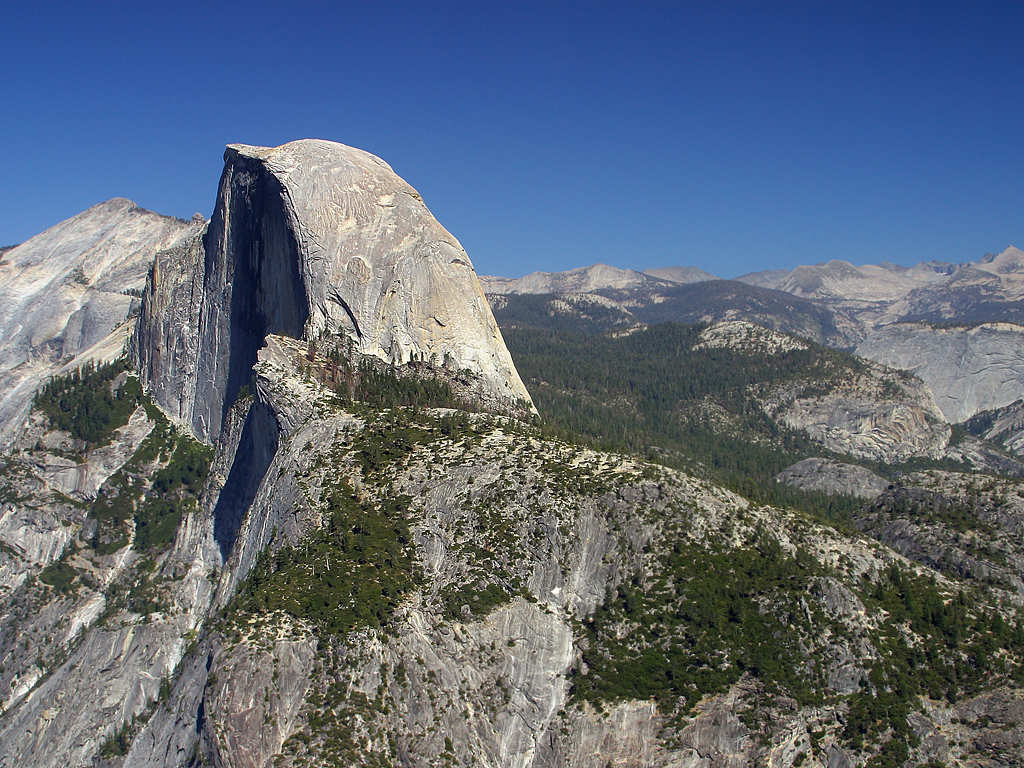

Figure 4.14 Granite is one of the most common forms of rock on Earth’s surface.
Discuss the following questions with a classmate. Then click to open the answers to see if they agree with what you came up with.
- Earth’s average density is about 5.5 g/cm3, but surface rock has a typical density between about 2 to 3 g/cm3. What does this fact tell us about how Earth’s interior density compares to its average density?
Because the surface density is less than the average density, the interior density must be more than the average density.
- Multiple choice: Would you expect the interior density to (a) vary randomly with depth; (b) increase smoothly with depth; or (c) decrease smoothly with depth? Explain your choice.
The correct answer is (b) — the density should increase smoothly with depth. The reason goes back to Earth’s formation. Recall that Earth and other planets formed as gravity collected material together. The fact that surface rock is less dense than the average density tells us that this material must have separated by density. When such separation by density occurs (a process called differentiation ), the result is layers with the densest material at the bottom, which in this case means the center of the Earth, and less dense layers above.
- Multiple choice: We cannot sample the material inside Earth to directly see what it is made of. However, we would expect the densest materials (the ones found near Earth’s center) to be: (a) dense materials that are commonly found in asteroids and meteorites ; (b) the very densest materials found in asteroids and meteorites, even if they are extremely rare; (c) the densest of all known chemical elements.
The correct answer is (a). Modern scientific understanding of the solar system tells us that the planets — along with asteroids and other objects — formed within a disk of material orbiting around the Sun (click here to review). This means we expect all these objects to be made of materials that were present in the disk. While we don’t expect Earth to be identical in composition to asteroids or meteorites, Earth should certainly be made from materials that are at least moderately common (not rare) in those objects.
The most common dense materials in asteroids and meteorites are metals such as iron and nickel (Figure 4.15). This means we can draw a remarkable conclusion from the simple fact that Earth’s surface density is lower than Earth’s average density: Earth’s deep interior must be made mostly of dense metals such as iron and nickel, with layers of lower density rock sitting above that.
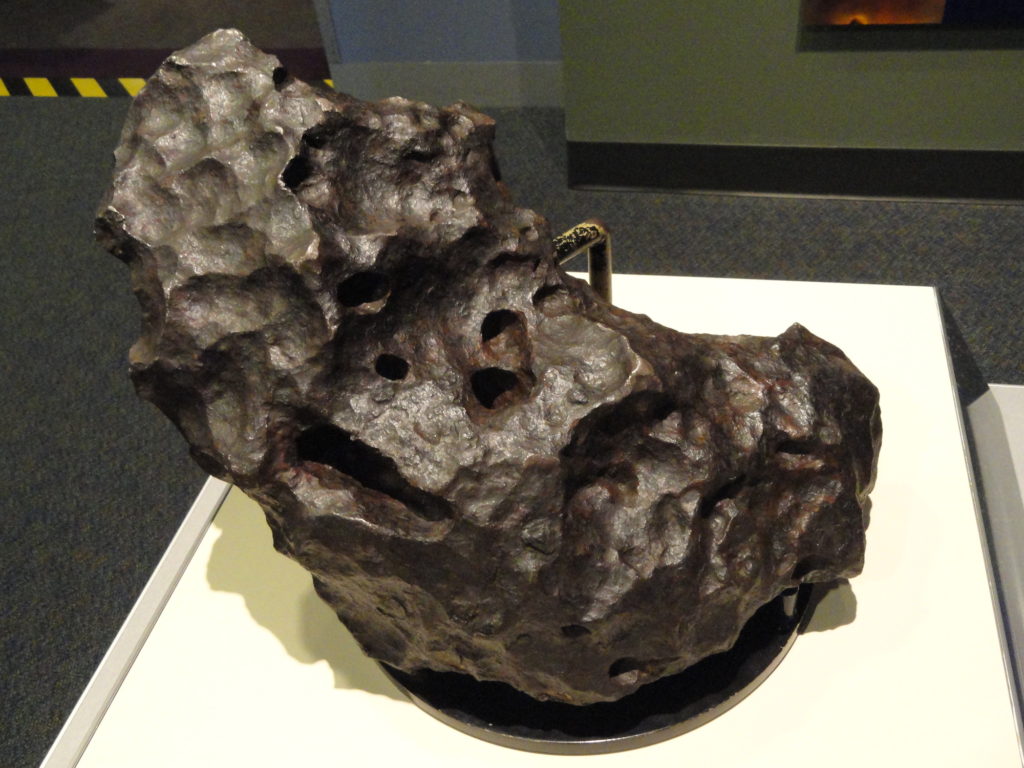
Activity
Oil and Water
Find a clear drinking glass or flask, and pour in approximately equal amounts of vegetable oil and water. Watch what happens, then answer the following questions:
- After a few minutes, what do you notice about the oil and water?
- Why do you think that happened?
- Given that you know that water has a density of 1g/cm3, what can you say about the density of vegetable oil?
- How is this related to the idea that Earth has its densest materials concentrated near its center with layers of lower density material above?
Teacher Notes: This is a very simple activity to make sure students understand the separation of oil and water. Notes on the questions:
- The vegetable oil and water should clearly separate into distinct layers, with the water below and the oil above. You might have students mix them up again (or shake them up if you have a flask with a lid) so they are convinced that this separation will always occur.
- It happens because the oil is less dense than the water. Gravity therefore causes the water to sink down, forcing the less dense oil to rise up into a layer above it.
- The basic answer is that vegetable oil must have a density that is less than 1g/cm3 . Common vegetable/cooking oils have a density of approximately 0.9g/cm3, which means they are about 10% less dense than water.
- The answer is the same as what students hopefully already answered in the multiple choice question above: Just as with the oil and water, we expect Earth to have separated into layers that have a smoothly decreasing density from the center to the surface. Note: As we will discuss shortly, this fact in turn implies that Earth must once have had a liquid (molten) interior, since that is the only way that denser metals could have sunk downward.
Discussion
Solid Gold Planet
Discuss the following questions in small groups, then come together as a class to form a consensus on whether solid gold planets might be likely anywhere.
- Why don’t we think that Earth’s core could be made of solid gold?
- Does it seem likely that planets with solid gold interiors exist anywhere in the universe?
This can be a very brief discussion. Notes on the answers.
- (1) As already discussed, we expect Earth’s interior to be made of materials that are common in asteroids and meteorites, and that is not the case for gold, which is present but rare. More technically: We learn the original composition of the disk from which the planets formed by studying the composition of the Sun, since it formed at the center of that same disk. We thereby know that gold is a rare element throughout the solar system, so we wouldn’t expect any planet to have an interior made mostly of gold.
- (2) This question can spur some interesting discussion. Scientifically, the answer is clear: Gold is rare throughout the universe, and therefore we would not expect to find a gold planet anywhere. However, unless students have learned more about astronomy on their own, they will not necessarily know this answer, so they will have to discuss inferences based on what they have learned. For example:
- The best argument (and a correct one) that students can make with their knowledge from this textbook is: (1) From the first question, they know that we don’t expect gold planets in our solar system. (2) They have earlier learned that we expect the same laws of nature to operate similarly everywhere. (3) Putting those two facts together, they can correctly infer that gold planets would be unlikely anywhere.
- However, students also have learned how vast the universe is, so some might be tempted to argue that there might be some place where a gold planet would occur. This argument is not completely unreasonable; however, scientists are able to observe the composition of stars and galaxies throughout the universe (per next note), and these observations indicate we are unlikely to find any place where gold might be common enough, and present in large enough quantities to account for the mass of an entire planet.
- Background info for you: Scientists can learn about the chemical composition of the universe through spectroscopy. These studies tell us that stars everywhere are made of essentially the same materials, and this composition is always at least 98
%hydrogen and helium, with all other elements making up less than 2%. Since planets and stars form out of the same gas clouds, the disks in which planets form must have the same composition as the stars around which they form. The reason planets differ in composition is because they form (at least initially) from material that condenses into solid form in these disks. As in the star, the disks are 98% hydrogen and helium, and these gases do not condense into solid form. Therefore planets are born as gravity pulls together the solid material condensed from the remaining 2%. In the inner solar system, where temperatures are high, the only materials that can condense are rocks and metals – that is why the inner planets and asteroids are made almost entirely from rock and metal. In the outer solar system, where it is colder, ices can also condense (especially water ice, ammonia ice, and methane ice). Therefore, the solid material in the outer solar system is a mixture of ices and rock and metal. We see this composition in most outer solar system moons and in comets. The four jovian planets (Jupiter, Saturn, Uranus, and Neptune) differ because they formed from ice/rock/metal clumps that grew so large that their gravity was able to capture some of the surrounding hydrogen and helium gas. Because this gas was so much more common than the other materials, these planets were able to collect enough that their overall composition became mostly hydrogen and helium. In fact, Jupiter amassed so much of these gases that its chemical composition is nearly identical to that of the Sun.
Earth’s Internal Layers
We have used Earth’s bulk properties and our understanding of the solar system and physics to infer that Earth must have an interior that is layered by density. But how many layers does it have, and how do they differ? We know the answer primarily through the study of what we call seismic waves , which are vibrations created by earthquakes.
An earthquake causes the ground to shake, and this sends seismic waves traveling both along Earth’s surface and through Earth’s interior. These waves can cause ground shaking even at great distances from the location of an earthquake, and the shaking can be recorded with an instrument called a seismograph (Figure 4.16).
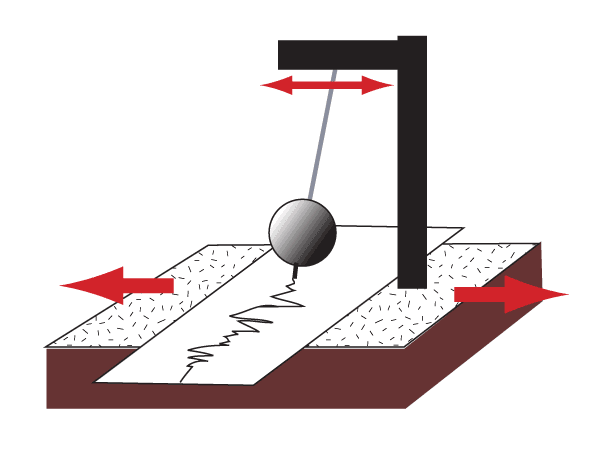
Connections—Etymology
SEISMIC
The word seismic (pronounced “size-mick”) comes from the Greek word for “shake.” Therefore, seismic waves are waves caused by shaking. You can similarly understand the word seismograph by remembering that graph means writing or recording (as in an autograph or a photograph); therefore a seismograph is device that produces a recording of the shaking.
Today, scientists have seismographs located at thousands of stations around the world. By comparing the shaking recorded at many different stations, scientists can calculate exactly where an earthquake occurred and how the seismic waves from the earthquake traveled through the Earth.
Careful study of seismic waves has led scientists to conclude that Earth has three basic layers (Figure 4.17):
- Core : Earth’s core is made mostly of high-density metals such as iron and nickel. Earth’s core has two regions: a solid inner core and liquid outer core. That is, the inner and outer core are both made largely of iron and nickel, but these metals have melted into liquid form in the outer core.
- Mantle : The mantle contains moderate density material that is primarily rock that is higher in density than surface rocks but lower in density than the metals in the core.
- Crust : The crust is the outermost layer of our planet, and it is made primarily of rocks that are lower in density that mantle rock.

Note that, with the exception of the outer core, all other regions of Earth’s interior are almost entirely solid. You might then wonder where molten lava that erupts from volcanoes comes from. The answer is that volcanoes occur in places where there are small, underground chambers of molten (melted) rock. When a pathway to the surface opens up, this molten rock can rise upward, causing a volcanic eruption (Figure 4.18). Aside from these relatively small pockets of molten rock, the rest of Earth’s mantle and crust is made from solid rock.
By the way: the terminology related to molten rock can be a bit confusing, so here’s a brief summary:
- Molten rock that has erupted to the surface is called lava .
- When underground, the very same molten rock is called magma.
- Although lava technically means rock that has melted into liquid form, sometimes people refer to “solidified lava” when talking about the rock formed by recent lava flows.
In this book, we will stick to referring to “molten rock” when the melted rock is underground and “molten lava” when it has erupted to the surface.
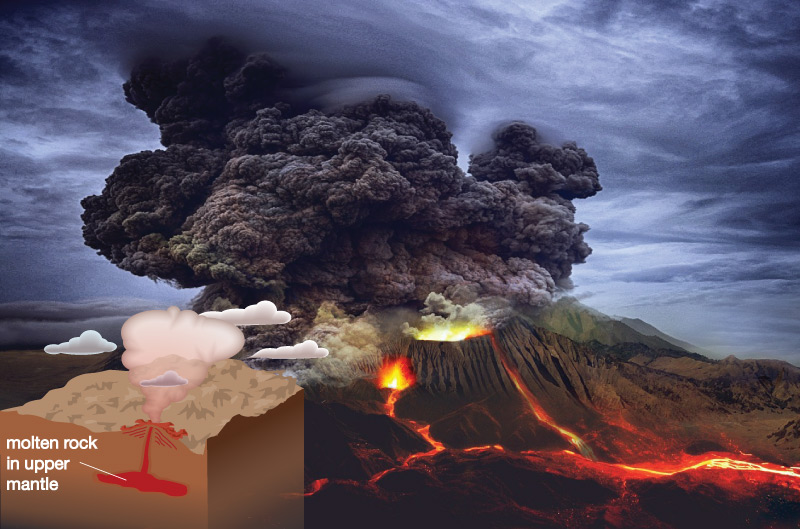
Internal Heat
You have probably heard that Earth is hot inside, but how do we know this? Scientists have at least four ways of knowing that Earth must be hot inside:
- Volcanic eruptions make it fairly obvious that Earth must have enough internal heat to melt rock, at least in some places.
- Near the surface, we can directly measure the fact that Earth gets hotter as you go deeper. Miners know this from the fact that it gets quite hot in deep mines. Also recall that scientists have drilled a few kilometers into the Earth, allowing measurement of how temperature changes with depth.
- The fact that Earth has a liquid outer core provides a particularly important clue: Because we know the core is made of dense metals like iron and nickel, the outer core must be hot enough to melt those metals.
- The mere existence of the internal layering tells us that Earth’s materials have separated by density, and this can only have happened if Earth’s interior was once (long ago) fully molten. This means Earth must have been quite hot at that time. Although Earth has obviously cooled since that time (since most of the interior is no longer molten), calculations based on the physics of cooling tell scientists that it must still remain fairly hot inside.
In fact, Earth is quite hot inside. The temperature must get progressively hotter with depth, and the inner core has a temperature of at least about 6,000 °C. This is about the same as the temperature on the surface of the Sun (but the interior of the Sun is much hotter than that). As we will see later, this internal heat provides the energy that drives Earth’s geological activity.
Claim, Evidence, Reasoning Activity
Earth’s Molten Past
Use the Claim, Evidence, Reasoning format to support the following claim:
This CER activity is intended to make sure students understand the reasoning that leads to the last bullet above. The evidence and reasoning process may vary, but should probably include noting that (as they’ve already seen) a mixture of oil and water will separate by density. In contrast, a mixture of solid rocks will not. They can then reason that only liquids are able to separate by density, and thereby recognize that the density separation of Earth’s interior implies that it must have once been fully molten. Notes if you want to build on this idea:
- The process of separating by density is called differentiation, because it results in layers of different materials.
- In general, only relatively large worlds get hot enough inside to undergo differentiation when they are young. For that reason, large worlds tend to be differentiated, while smaller worlds tend not to be. That is, most asteroids and comets are small enough that they do not have a core-mantle-crust structure.
- The molten phase for a relatively large world also represents a time when gravity can much more easily shape it into sphere. That is another reason why large worlds are spherical.
Plate Tectonics
There is one more crucial idea that you should know about what Earth looks like on the inside: Its crust is not just a smooth shell, but instead is broken into pieces that fit together somewhat like pieces of a jigsaw puzzle. (More technically, as discussed in the Take it to the Next Level box below, the pieces are thick enough to include part of the upper mantle as well as the crust.)
Figure 4.19 shows maps of these pieces, which are called tectonic plates , though we often simply call them “plates” for short. The plates are important because they don’t just stay still. Instead, they move about slowly in ways that scientists now understand to explain much of Earth’s geology.
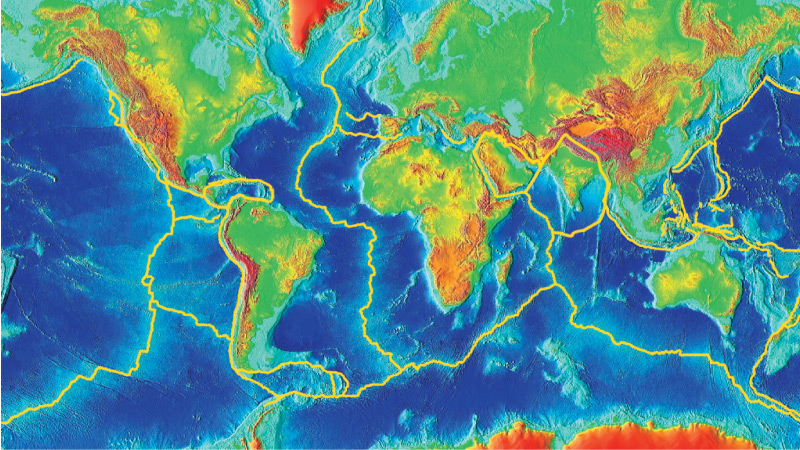
Figure 4.19 - Earth’s crust (and upper mantle) is not smooth but is instead split into many plates that fit together somewhat like jigsaw puzzle pieces.

Claim-Evidence-Reasoning Activity
Plates and Geological Features
Look back at earlier maps that you’ve studied to learn about major features of Earth’s surface, then compare to the maps of the plates in Figure 4.19. Based on what you see, use evidence and reasoning to support or refute the following claim:
The claim in this case is true, and students should be able to support it by identifying the locations of major features we’ve discussed earlier in the chapter on the plate boundary map. For example, they should see clearly that the mid-ocean ridge system runs along plate boundaries, as do major trenches, major island chains, and the Himalayas range.
The scientific theory that explains how the plate motions lead to Earth’s major geological features is called plate tectonics . We will discuss this theory in more depth in Chapter 5, but you may already be aware of some of the connections. For example:
- Mid-ocean ridges are places where plates are moving apart from each other, allowing hot rock from the mantle to rise upward and create new ocean floor.
- Trenches occur where one plate is sliding downward beneath another, pulling the ocean floor downward with it. This process can sometimes push the upper plate upward, explaining the association of trenches with nearby mountain ranges or island arcs.
- The Himalayas mark a place where two plates have crashed into each other, forcing rock to rise upward as a mountain range.
- Earthquakes and volcanoes occur much more commonly along plate boundaries than elsewhere.
- Over long periods of time (tens to hundreds of millions of years), the plate movements can change the arrangement of the continents on Earth’s surface.
It is no exaggeration to say that we cannot understand our planet without first understanding plate tectonics, which is why we will return to this important topic in the next chapter.